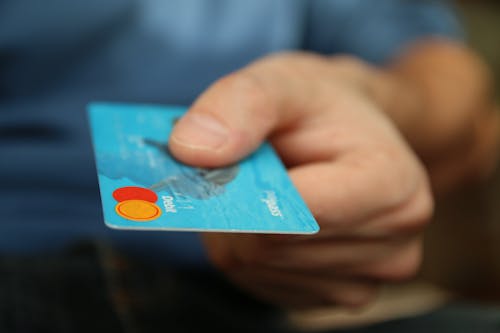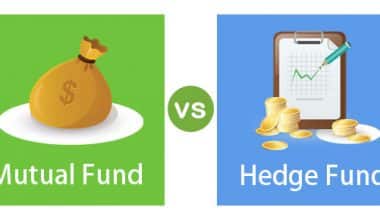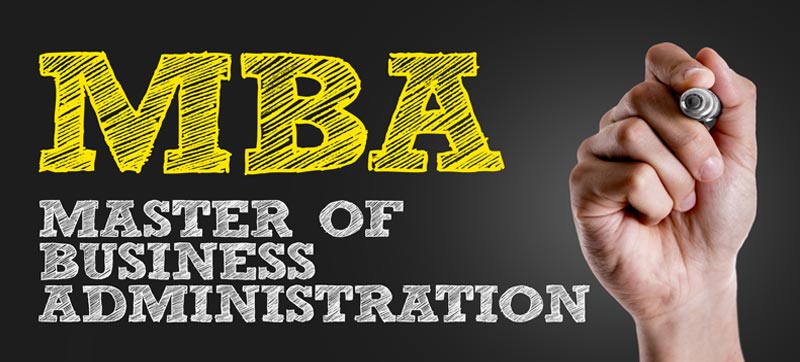Who pops into your head when you think about your customer? What are their goals, desires, and challenges? Even better, do you know what makes them pick your company over the competition? Did you know 70% of online shoppers abandoned their carts in 2024? It’s pretty wild. But then I totally get it, figuring out your customers can be a bit of a puzzle.
Just when you think you’ve figured out their behavior, their journey from awareness to purchase can still throw you a curveball. No matter how much insight you have, there’s always some level of unpredictability in the process.
Honestly, I can’t guarantee you’ll nail every single step, but customer journey mapping is a fantastic tool for keeping tabs on those key milestones every customer hits.
In this post, I’ll guide you through all the essentials of a customer journey map, so let’s get right into the tea.
Key Point
- The customer journey is the process a customer undergoes from realizing a need to making a purchase, focusing on their experience with a brand.
- A customer journey map is a visual representation of the stages customers go through when interacting with a company, from awareness to loyalty.
- Customer journey mapping helps businesses identify gaps in the customer experience, predict future actions, and improve the overall customer journey to drive sales and loyalty.
- Data from customer surveys, purchase history, and other interactions is crucial for accurately mapping the customer journey and understanding their needs and behaviors.
What is Customer Journey?

The customer journey is all about the steps a customer takes when they first notice a problem and decide to buy a product or engage with a brand. The buyer’s journey is all about the steps leading up to a purchase, while the customer’s journey focuses on the experience a buyer has with a particular company or service during that process. Do you get the concept?
What is a Customer Journey Map?
A customer journey map is like a roadmap showing the different stages customers hit while dealing with a company—everything from shopping online to calling customer service and even venting on social media.
To whip up effective visual maps that showcase customers’ journeys through these channels, journey maps need to be grounded in solid data research and visually illustrate the various phases customers go through, considering factors like customer sentiment, business goals, and touchpoints.
To cover all bases, companies usually have to use multiple customer journey maps that capture a complete view of how customers interact with them. To get in better with the flow, let’s say that a customer kicks things off by tweeting about a company, product, or brand. Next, they grab their phone and ring up customer support. Finally, they wrap it up by leaving a comment on the company’s website.
Now that’s a customer journey map right there and with the right knowledge and navigation of the concept, you can always make it a success.
Why is Customer Journey Mapping Important?
I’ve discovered that the customer journey is a bit more complex than it seems. It’s a simple equation: you offer a product, and the customer buys it. But really, it’s a lot more complex. Before a customer even hears about your product, they’ve already figured out they’ve got a problem that needs fixing.
On their journey, they’ll encounter various touchpoints. They might catch a competitor’s ad, skim a review, jump on a sales call, or even go through a demo. Every one of those interactions influences their feelings about your brand.
Now remember that 80% of customers care about their experience with a company just as much as the product they’re buying and I bet you want to make yours pleasant.
Mapping out the customer journey reveals how it helps marketing, sales, and service teams grasp each stage clearly. It cuts down on friction and makes customers happier. So make sure you tap into the power of your customers!
Benefits of Customer Journey Mapping
A customer journey map allows companies to see their products in a fresh light, helping them analyze various user scenarios and spot any gaps. It helps them understand what customers want and how they navigate to find a product. It’s a handy tool that can also predict the future journeys of customers.
Here are the top perks of creating a customer journey map:
#1. Extracts valuable insights
Mapping out a customer journey gives everyone in the organization a clearer view—from sales reps figuring out how to charm potential customers to managers seeking the scoop on which channels are the most popular with clients. A customer journey map, for example, can reveal that a specific department is missing the resources or tools necessary to follow up with clients after a sale.
#2. Foresees how shoppers will act
A customer journey map lets companies take a good look at where the customer is now and where they’re headed in the future. As clients navigate the various stages of the sales funnel, journey maps can help anticipate their actions and gauge the chances of a particular prospect making a conversion. Companies can speed up the sales process for potential customers by really getting to know their target audience.
#3. Spots gaps and loopholes
A customer journey map is a great way to spot process gaps and tear down those pesky silos between departments. It can also point out and spot gaps in the customer experience (CX), including these:
Gaps between devices; happens when a user switches from one device to another.
Gaps between departments; frustration can arise from gaps between departments.
Gaps between channels; that could really improve the journey from social media to the website.
#4. Tracks how customers move through the sales funnel
A customer journey map is great because it clearly shows how customers navigate the sales funnel. Boosting that path’s efficiency leads to faster sales and more cash in your pocket.
#5. Assists companies in grasping the customer’s journey
Seeing what the customer is feeling right now is crucial for sales and marketing; it lets the organization step into the customer’s shoes. Businesses can boost customer experience by charting the client’s journey, highlighting both the bumps in the road and the delightful moments with the product.
#6. Boosts customer loyalty
When you tackle a customer’s hurdles, it boosts their satisfaction, and that’s a recipe for loyalty!
#7. Increases income

Boosting the customer experience can really ramp up sales, as folks are more inclined to purchase from companies that offer a great experience.
#8. Delivers benchmarks and comparisons
By mapping out the customer journey, businesses can keep tabs on their growth over time and see how they stack up against industry standards and competitors.
What Data is Necessary for Customer Journey Mapping?

When I’m mapping the customer journey, I focus on real data, not assumptions. Here’s what I’m on the hunt for:
#1. Surveys and Chats with Customers
Asking customers directly through surveys, like NPS, or interviews can really uncover valuable insights about their experiences, pain points, and product usage. This data is requested because I specifically asked for it.
#2. Unsolicited Data
I also collect data from customers that they don’t directly share, such as their purchase history, page views, and email clicks. This unsolicited data is incredibly handy for covering the gaps that surveys might overlook.
Customer Journey Stages
Customers typically navigate five stages when engaging with a brand or product: Awareness, Consideration, Decision, Retention, and Loyalty. So lets look at each stage of their journey individually:
#1. Awareness
Here’s where the magic starts! Customers come to the realization that they’ve got a problem on their hands. They may not have the perfect answer just yet, but they’re on the hunt, digging for solutions. It’s all about helping them see their pain points and suggesting some solutions, rather than nudging them to buy something.
Based on what I’ve seen, keeping an eye on page views and clicks can reveal what content really hits home.
Here are a few educational pieces I’ve used in the past:
- How-to articles and guides
- General whitepapers
- General ebooks
- Free courses
Share content like this on your blog, social media, or through search engines!
#2. Consideration

Customers are aware that they want something. They’ve done their homework and are all set to compare various products or services. Your task is to simplify that comparison and steer them toward the top choice—hopefully, that’s you!
I suggest creating product marketing content that helps customers compare various options so they can easily pick the right product or service for themselves. Here’s what you get:
- Product listicles
- Product comparison guides and charts
- Product-focused white papers
- Customer success stories or case studies
You can share this type of content on your blog, website, social media, and even at conferences!
#3. Decision
It’s official: they’re all set to make a purchase! Right now, keeping it simple is the name of the game. The easier you make buying, the happier everyone will be! Let’s not complicate things or keep comparing, shall we?
Content for the decision stage could feature:
- Free demos
- Free consultations
- Product sign-up pages
- Pricing pages
How about throwing in some eye-catching promotions like “Join today and snag 30% off!” Make your touchpoints straightforward, such as your website, email, and search engines.
#4. Retention
Congrats, they’ve purchased it! Now, it’s all about keeping them smiling and steering clear of churn. A great onboarding experience is key, and quick customer service is a must!
I’ve had some wins with these strategies:
- Offering a personal customer success manager
- Making your customer service team easy to reach
- Building a knowledge base for when customers hit a roadblock
Share these strategies via your website, live chat, email, or social media and witness magic!
#5. Loyalty
This is the jackpot: customers who not only stay loyal but also spread the word about you!
This phase, often referred to as the advocacy stage, focuses on providing an exceptional customer experience at every interaction, whether it’s your website, social media, or the user experience of your product.
At the end of the day, loyalty happens when customers thrive using your product. If they’re on a roll, you can bet they’ll share the news! Give these a shot:
- Have an easy-to navigate website.
- Invest in your product team to ensure your product exceeds customer expectations.
- Share your brand with others via a loyalty or referral program.
- Offer perks to continued customers, such as discounts.
You can deliver these via customer touchpoints such as your website, email, social media, and your products.
I’ve witnessed how top-notch support can transform a customer into a loyal brand champion. It’s super satisfying to realize that by helping them reach their goals, you’ve earned their loyalty.
Want to see if your customers are in this stage? Just use a quick Net Promoter Score survey! Pose the question, “On a scale from 0 to 10, how likely are you to suggest us to a friend?”
So, there you go — five simple steps to go from awareness to loyalty! Every single one counts.
The Customer Journey Mapping Process
Mapping the customer journey starts off with creating a buyer persona—easy peasy! Now let’s go into the process more deeper:
#1. Develop a customer persona to try out
To really get the customer journey, you’ve got to know the customer, and that’s where crafting a persona comes in handy. Feel free to focus on your regulars, those big spenders, or even the fresh faces you haven’t had the chance to work with yet. This persona goes way beyond just a marketing segment, but hey, it’s a fantastic starting point if you’re diving into the mapping process for your organization.
What’s on the list? Kick things off with these traits.
- Name
- Age
- Job role
- Family situation
- Career aspirations
- Goals for myself
These personas give you a better grasp of your customers and can come from insights, demographic data, or even chatting with customers directly. This applies to both B2B and B2C business models, but in B2B, you’ll often have several customers for each opportunity. So, it’s a good idea to create multiple personas.
First things first, stick to just three personas to keep it straightforward.
#2. Pick a customer journey to map out
Pick a customer journey map to create, then draw up a behavior line. This could be a fresh customer experience, a renewal, or sorting out a product hiccup. You could also pick this based on the customer journeys that happen the most or the ones that bring in the biggest bucks.
#3. Dive into the mapping process
Consider this:
- Who are the folks on this adventure? For instance, in a car dealership, you’ve got the customer, the sales rep, and the front-of-house staff all in the mix.
- What goes down during this journey?
- What do customers think? What are they feeling right now? Take it up a notch from just excitement or frustration. Make these feelings pop! This car is like a dream on wheels!
- What’s the moment that counts? Spot the peak of emotional intensity. It’s the moment that can turn everything around—things can be going great, but if you mess up that peak moment, all the good stuff just fades away. The top brands nail this moment, and spotting it is a crucial first step to making it happen. At that moment, think about what things, people, or processes are in the mix. Consider this for your entire business – from your product to your brand and service teams.
- But once you’ve pinpointed this moment, it’s time to figure out what your customers really need. What’s in it for them right now? What happens to their needs if this experience takes a turn for the worse? Having the answers to these questions lets you create experiences that hit home and tackle unexpected situations with ease.
- So, how do you figure out if you’re really hitting the mark with customer needs along the way? Establish KPIs to create benchmarks for your customer journey map and experience, then keep an eye on your progress.
#4. Get Creative!
As you chart your customer journey, think up ways to enhance that crucial moment that counts. No need for practicality here! Just gather a diverse mapping team from across the business, and you’ll start sifting through those ideas in no time.
Next up, give it a whirl!
Take a moment to ponder: Can this actually work? Is it doable? Is it something we want? Instead of asking if we can do it, let’s ask if we should! That’s when you can really stand out from the crowd!
#5. Time to Measure!
Leverage the customer journey map to shape your measurement framework.
Who’s on your measuring tape? What’s on your measuring tape? Are you keeping track of your journey along the way? So, what’s the reason? So, what metrics and KPIs do we have to track this?
These personas give you a better grasp of your customers and can come from insights, demographic data, or even chatting with customers directly. This applies to both B2B and B2C business models, but in B2B, you’ll often have several customers for each opportunity. So, it’s a good idea to create multiple personas.
Conclusion
When you really get what your customers go through with your business, you can wow them at every step of their buying adventure. Keep in mind that there are plenty of things that can influence this journey, like customer pain points, feelings, and the way your company interacts and operates.
Customer journey maps are a fantastic way to visualize this information, whether you’re fine-tuning the customer experience or diving into a new business opportunity to meet those hidden needs.
Related Articles
- CUSTOMER JOURNEY: Meaning and How to Use the Maps to Create a Unique Customer Experience
- CUSTOMER CONNECTION: Meaning, Importance & Best Practices






